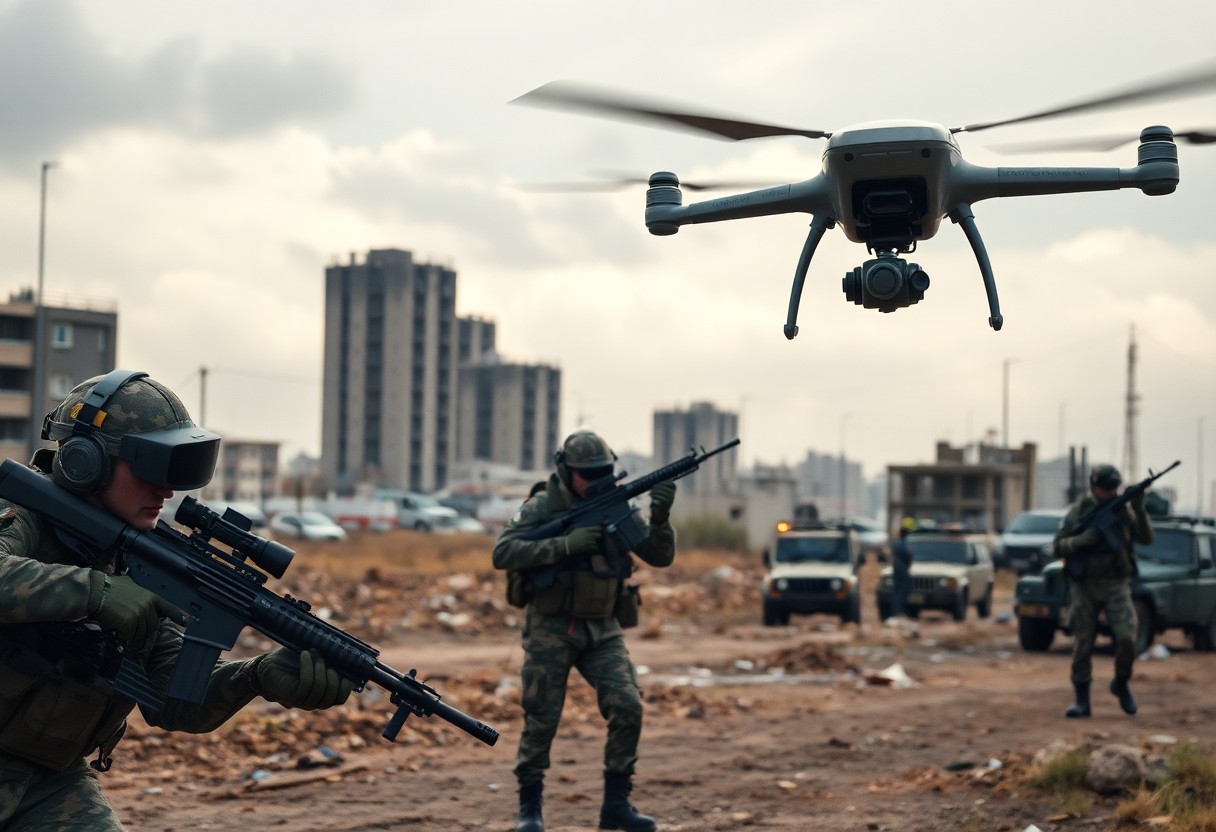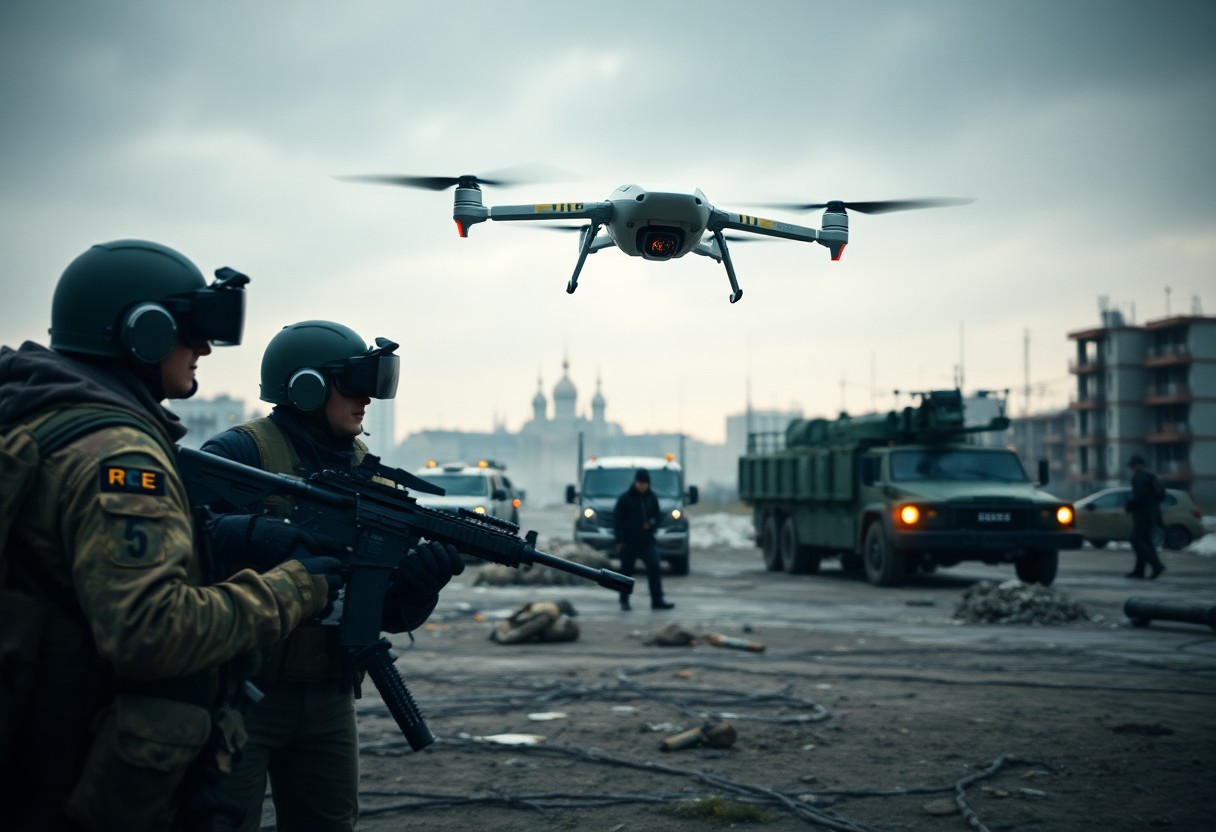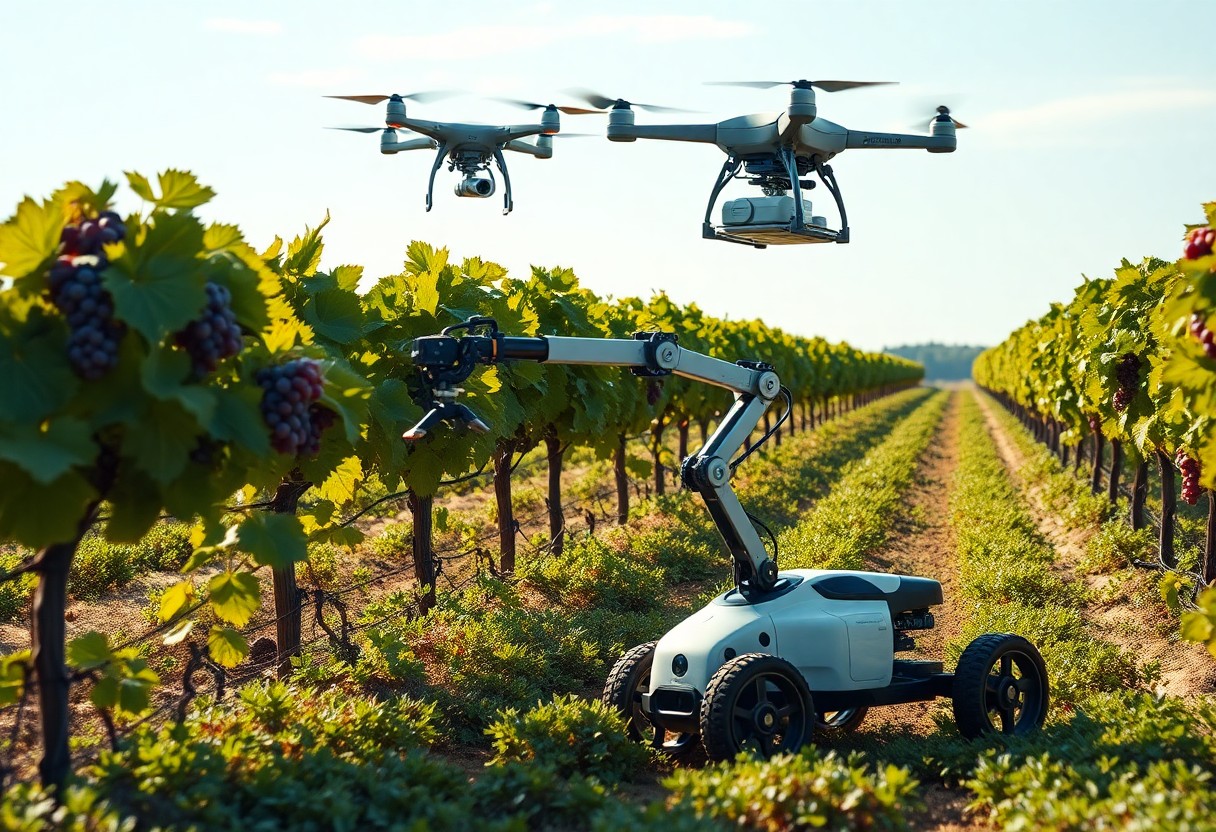Just as modern technology transforms various aspects of life, AI-driven warfare is reshaping the battlefront dynamics in Ukraine. You may find it intriguing how artificial intelligence influences military strategies, enhances decision-making processes, and alters the traditional landscape of conflict. In this post, you will discover the key ways AI is impacting tactics, logistics, and even psychological operations within this ongoing conflict, equipping you with a deeper understanding of the changing nature of warfare in today’s world.
The Rise of Autonomous Warfare Technologies
Autonomous warfare technologies are revolutionizing combat by allowing machines to take on tasks traditionally handled by human soldiers. With capabilities ranging from decision-making to real-time engagement, these technologies are altering traditional command structures and battlefield dynamics. Ukraine has become a proving ground for systems capable of executing missions without direct human oversight, raising questions about ethics and effectiveness in modern warfare.
Drones and Their Strategic Implications
Drones have emerged as a game-changer in modern warfare, drastically evolving tactical paradigms on the battlefield. They offer unparalleled reconnaissance and strike capabilities, allowing you to target enemy positions with precision while minimizing risks to personnel. As both sides in the Ukraine conflict deploy various drone models, the competition for air superiority has intensified, influencing how ground troops navigate and engage in combat.
AI-Powered Surveillance Systems
AI-Powered Surveillance Systems play a fundamental role in enhancing situational awareness around the front lines. These systems harness machine learning algorithms to analyze vast amounts of data from satellite imagery, drone feeds, and ground sensors, providing actionable intelligence in real-time. This capability allows you to track enemy movements with impressive accuracy and make informed tactical decisions.
By using AI to interpret data from multiple sources, you gain insights that were previously unattainable. For instance, Ukraine’s integration of AI-powered drones with intelligent surveillance systems enables it to monitor remote areas and predict potential threats based on behavioral patterns. This advanced level of reconnaissance helps in efficiently reallocating resources and adapting strategies, thereby improving both defensive and offensive operations. Through the continuous evolution of these technologies, the battlefield is transformed into a complex network where data-driven decisions can sway the outcome of engagements swiftly.
Transforming Command Decisions
Your command decisions are undergoing a radical transformation thanks to AI. By harnessing the power of machine learning and advanced algorithms, commanders can now make informed choices faster than ever, significantly enhancing strategic effectiveness. Rapid data processing ensures that you have the latest battlefield information at your fingertips, shifting how operations are calculated and executed.
Real-time Data Analysis on the Battlefield
AI’s ability to analyze vast amounts of data in real-time is revolutionizing combat scenarios. You benefit from immediate insights into troop movements, environmental factors, and the enemy’s tactics. This instantaneous information allows you to adapt your strategies in the heat of conflict, increasing your chances of success and minimizing losses.
Predictive Analytics in Tactical Planning
Predictive analytics offers you the tools to foresee possible outcomes based on existing data. By leveraging historical battle data and AI models, you can anticipate enemy movements and potential threats more accurately. This advanced approach enables your team to formulate counter-strategies proactively instead of merely reacting to unfolding events.
Your approach to tactical planning enhances significantly with predictive analytics. For instance, the integration of AI-driven simulations can forecast enemy tactics, enabling you to devise proactive countermeasures. Operation Zapp, a recent military exercise in Ukraine, showcased how commanders utilized algorithms to predict resource allocation by their adversaries. By weaving predictive insights into their battle strategy, they achieved a 30% increase in mission success rates, demonstrating the powerful impact of this technology in real-time decision-making. Embracing these predictive models can ultimately place you steps ahead on the battlefield.
The Role of Cyber Warfare in Modern Conflicts
Cyber warfare is now a fundamental element in modern conflicts, influencing everything from tactical decisions to strategic outcomes. In Ukraine, the frontlines blur as cyber operations become as impactful as conventional combat. The ability to disrupt enemy communications, gather intelligence, and even manipulate information in real-time can shift power dynamics dramatically, underscoring the importance of online warfare in today’s military playbook.
AI Systems in Cyber Defense and Offense
AI systems are revolutionizing both defensive and offensive cyber strategies. With machine learning algorithms analyzing vast streams of data, you can detect threats faster and respond more effectively. For instance, predictive analytics can foresee potential cyberattacks, while automated response systems can neutralize threats before they escalate, enhancing your cybersecurity posture significantly.
The Impact of Cyber Espionage on Military Strategy
Cyber espionage profoundly influences military strategy by providing critical intelligence on enemy capabilities and intentions. By harvesting data from compromised networks, you gain insights that inform strategic planning and operations. This intelligence can lead to preemptive actions or tailored countermeasures that exploit discovered weaknesses.
With cyber espionage, you’re not just reacting to enemy threats; you’re actively shaping the battlefield. The information gained through these cyber operations can alter the timing and execution of military tactics, allowing for informed decisions that capitalize on your adversaries’ vulnerabilities. For example, in the earlier stages of the ongoing conflict, Ukraine’s ability to utilize intelligence gathered from cyber surveillance played a vital role in thwarting Russian advances, leading to more calculated defensive maneuvers. This transformative use of cyber intelligence highlights how deeply intertwined digital warfare has become with traditional military strategies, making it an indispensable element of modern conflict scenarios.
The Human Element in an AI-Dominated Battlefield
Even as AI technologies evolve, the human element remains integral to the dynamics of Ukraine’s battlefront. Soldiers must interpret AI-generated data and make ethical, tactical decisions in rapidly changing environments. The reliance on machines does not eliminate the necessity for human judgment; instead, it amplifies your responsibility in interpreting myriad data points to assess threats and strategize effectively. The balance between machine efficiency and human intuition continues to be tested in the heat of conflict.
Ethical Considerations in AI Utilization
The deployment of AI in warfare raises significant ethical dilemmas, particularly regarding autonomous decision-making in combat. You must navigate the moral implications of allowing machines to determine targets without human intervention. This presents potential violations of international law and challenges to accountability, especially in scenarios that might involve civilian casualties.
The Shifting Role of Combat Personnel
The integration of AI alters the role of combat personnel fundamentally. As AI takes over surveillance and data analysis, your responsibilities may shift towards more strategic functions, including decision-making and leadership. Instead of performing routine tasks, soldiers might focus on creative problem-solving in response to AI-driven insights while maintaining direct engagement with technology.
This evolution prompts a need for new skill sets among combat personnel. Emphasizing tech-savviness becomes paramount as you learn to operate alongside AI systems, interpreting data and using it to inform battle tactics. In this environment, teamwork extends to collaborations between human operators and AI entities to maximize effectiveness. You’ll need to cultivate both critical thinking and adaptability to respond adequately to the challenges presented by this new battlefield landscape. Enhanced training programs focusing on hybrid warfare tactics are becoming vital for preparing soldiers to thrive in the AI-enhanced combat scenario.

Global Reactions and the Arms Race Effect
As AI technologies reshape warfare in Ukraine, countries across the globe are responding with a mix of concern and urgency. Nations are ramping up their own AI military programs, leading to an accelerated arms race. Investments in autonomous drones, AI-driven surveillance systems, and enhanced cyber capabilities are becoming the norm, as countries strive to keep pace. The implications of these enhancements could potentially destabilize existing geopolitical landscapes and lead to a future where AI-controlled weaponry drives the next phase of international conflict.
How Nations Are Responding to AI Advancements
Countries are increasingly prioritizing AI in their defense strategies, with many initiating collaborations with tech firms to develop cutting-edge military technologies. For instance, the U.S. has allocated billions to foster AI research and development, while NATO is exploring joint AI initiatives. This shift not only signifies a race for superiority but also reflects a broader understanding that maintaining a technological edge is vital for national security in this new era of warfare.
The Potential for a New Cold War
The emergence of AI-driven warfare may herald a new kind of Cold War, characterized by strategic rivalries based on technological superiority rather than conventional military might. As countries like China, Russia, and the U.S. engage in a competitive buildup of AI capabilities, the risk of miscalculations increases. This situation mirrors historical tensions from the previous Cold War, where arms races were often fueled by fear and mistrust. With AI’s capacity to enhance lethality and decision-making speed, the stakes in this evolving dynamic are alarmingly high.
In this context, the potential for conflict escalates as nations stockpile AI technologies akin to nuclear arsenals. The rapid development of AI weaponry could lead to situations where countries feel compelled to demonstrate their capabilities, prompting preemptive strikes under the guise of defense. Historical parallels can be drawn to the arms race of the 20th century, where escalatory tactics led to the brink of nuclear war. Today, AI could similarly erode military thresholds, fostering environments ripe for conflict unless diplomatic measures and frameworks are established to mitigate risks and promote responsible use of these technologies.
To wrap up
Now, as you analyze the implications of AI-driven warfare in Ukraine, it’s clear that technology is reshaping the battlefield in unprecedented ways. Enhanced surveillance, decision-making efficiency, and automated systems are providing advantages that can shift the tide of conflict. Understanding these dynamics allows you to appreciate how AI is not merely a tool but a game-changer in modern warfare. By staying informed, you can better comprehend the complexities of these unfolding scenarios and their potential impact on geopolitical stability.







